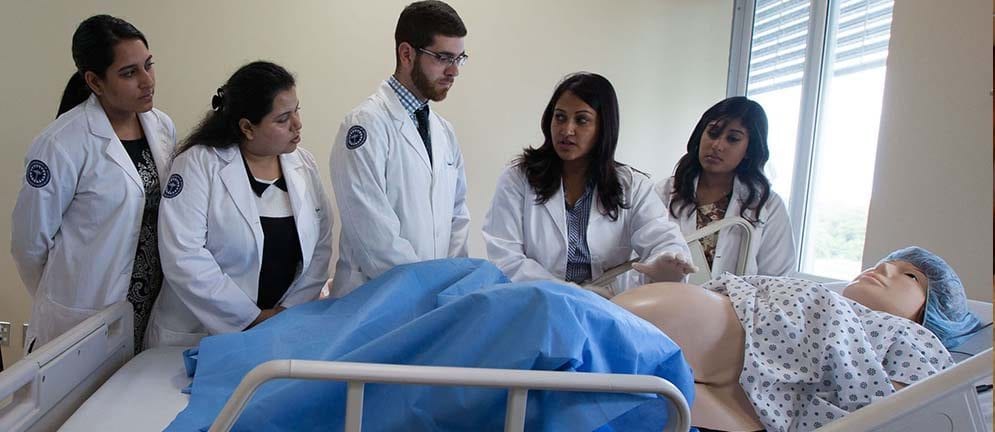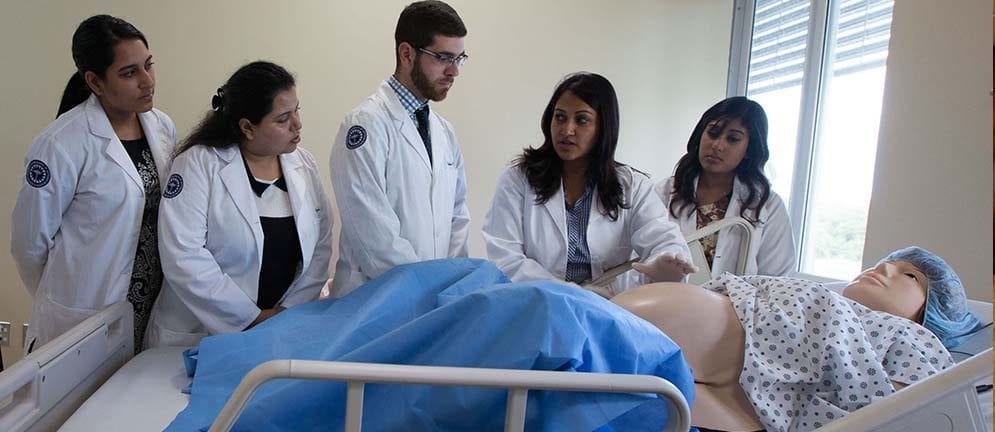
If you want to go to medical school, you’ll eventually have to make decisions about several aspects of your career, including what field you’d like to specialize in, where you want to practice medicine, and what type of practice you’d like to have. Before you can make any of those decisions, however, you have to enter medical school. As you are exploring the types of medical schools that are right for you, your first decision will be whether to enter an MD program or a DO program. To help you make that important decision, here is some helpful information that outlines the difference between MD and DO.
What is an MD?
An MD is a medical doctor, or a doctor who practices allopathic medicine. In short, that means the doctor follows the practices of traditional Western medicine, where symptoms and illnesses are treated on a case by case basis with a focus on prescription medicines and laboratory tests. When people ask about a “doctor”, they are typically referring to an MD, although both MDs and DOs are licensed doctors who can practice medicine in all 50 states in the US.
What is a DO?
A DO is a Doctor of Osteopathic Medicine. This differs from allopathic medicine in that DOs emphasize treating symptoms and illnesses through the manipulation and adjustment of bones, joints, and muscles. DOs tend to take a more holistic approach to treating patients and try to use their knowledge of the body’s natural healing abilities to improve patients’ quality of life without excessive or unnecessary drugs.
Comparison of DO vs MD
If you’re considering entering medical school, you’ve probably wondered, “What is the difference between MD and DO, anyway?” While both programs will provide the opportunity to become a licensed, practicing physician, there are some differences that will affect both your educational experience while in medical school and your career experience after becoming licensed.
To identify the biggest factors that can affect your decision to enter a particular program, it’s important to consider several aspects where DO vs MD programs differ.
Medical Training & Education Requirements
In the US, both MDs and DOs follow a similar path through medical school – one that involves earning a bachelor’s degree followed by four years of medical school and a rigorous residency program. The length of the residency program is determined by the specialty chosen, so both DOs and MDs should expect to be in residency for anywhere from 3 to 7 years.
Students choosing an MD path should be prepared for a more competitive med school application process. Although most medical schools in the US offer a Doctor of Medicine (MD) program, admission to these programs is generally more competitive and requires higher test scores than admission to a DO program. On average, MCAT scores for students admitted to an MD program in the US is a 511.
This doesn’t mean that admittance to a DO program will be easy, however. There are only about 35 accredited osteopathic medical schools in the US, and the average student admitted to a DO program will still rank above the 67th percentile for MCAT scores, or about a 504. Once accepted, DOs in training will complete general medical school training followed by an additional 200 hours or more of coursework that focuses on healing and treatment based on manipulating the musculoskeletal system, otherwise known as Osteopathic Manipulative Treatment (OMT).
DO vs MD Salary Expectations
Regardless of the chosen pathway, medical practice is a lucrative career. The time and effort spent for years in medical school and residency will have DOs and MDs earning high six-figure salaries once they are fully licensed.
The 2019 Medscape Physician Compensation Report showed the average doctor’s salary was $313,000 per year, up from $299,000 per year in 2018. This study also showed that specialists earned considerably more than primary care doctors, and the top grossing specialization was orthopedics, which earned physicians an average annual salary of $482,000. While many DOs do go into general practice fields, those who decide to specialize earn, on average, the same as their MD counterparts when controlling for other factors. Field of practice, geographic location, and experience will all play considerable factors in the earning potential for DO vs MD.
To maximize their salary potential, doctors should choose a specialization and consider working in an urban area that offers higher compensation rates. Working for larger hospital chains can also help DOs or MDs earn a higher base salary early in their careers, since hospital chains typically have more capital to offer physicians than smaller private practices.
Career Availability
According to Association of American Medical Colleges (AAMC) research, 66.7% of active physicians hold MD degrees, while only 7.8% hold DO degrees. The remaining 24.5% of active physicians in the US are those who hold degrees from international medical schools. This research might seem to indicate that DOs have lower career availability than MDs, but that interpretation isn’t reality. DOs make up a lower percentage of physicians because there are fewer accredited DO programs and fewer students graduating from those programs. Students successfully graduating from either an MD or DO program had over a 98% placement rate into residency in 2018.
MDs, especially those who enter rare or specialized fields, will have more career availability in urban areas where larger research hospitals are located. DOs, with their focus on holistic care, have a history of helping underserved populations in more rural areas. Although either type of doctor can find work in either setting, aspiring physicians may find more career opportunities available in certain geographic regions based on their chosen degree.
Approach to Treatment
The very definitions of allopathy and osteopathy indicate a significant difference in the approach to patient care. MDs who practice allopathic medicine treat diseases by prescribing tests and medicines that will have opposite effects from the symptoms described by the patient. For example, if a patient complains of chest congestion, an MD will prescribe a decongestant.
Starting early in their medical school training, osteopathic doctors learn an approach to patient care that addresses the human body as a whole. DOs can and do prescribe medicines when needed, but they also consider other factors in the patient’s lifestyle and use alternative treatments, such as OMT. For example, if a patient has diabetes, a DO will not just prescribe insulin, but will also explore food choices, exercise regimens, and other ways of controlling the symptoms of the disease.
Most patients may not perceive a difference in care between an MD vs DO, however. While the training of a DO program focuses much more heavily on holistic and natural healing techniques, many MDs choose to take a holistic approach to patient care as well.
Similarities between MD vs DO
When asking, “What is the difference between MD and DO?”, the real answer is “Not much.” While there are a few differences in the career trends and the intricacies of how each respective doctor receives his or her license, the result after licensing is the same – a doctor who cares for the physical well-being of patients.
More specifically, both MDs and DOs:
- Are governed by the same medical regulations and state licensing boards.
- Are licensed to practice medicine in all 50 states within the US and many international countries as well.
- Prescribe medications and write prescriptions for those medications.
- Can specialize in any field they choose.
- Complete a thorough medical training program that includes multiple years of residency under the supervision of a licensed physician.
Furthermore, recent changes to the medical education accreditation system have brought these two pathways even closer together. For the first time in June 2020, both MD and DO candidates will apply for and enter the same residency programs. Previously, MD candidates could not apply for or enter DO residency programs, and DO candidates wishing to enter MD residency programs had to undergo additional licensing exams and application steps to qualify. This revision to the accreditation system will open all residency programs to candidates working towards either degree.
DO vs MD: So which is better?
Although there are some noticeable differences between MD and DO programs, these differences don’t amount to one pathway being significantly better than the other. Ultimately, the choice of DO vs MD is one of personal preference. However, it is important to note that statistically speaking, a larger percentage of active physicians hold MD degrees. Students considering medical school should evaluate both program types along with their personal long-term career goals and apply to multiple programs that match their needs. Once a student has been accepted and selects the program that is the best fit, they can begin the journey to becoming a successful physician as either an MD or a DO.








